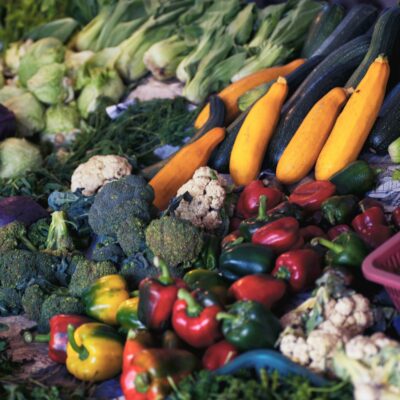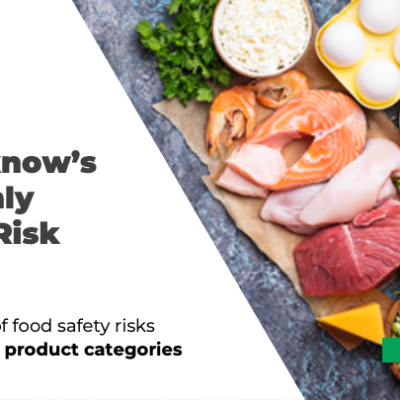
Our Annual Food Safety Intelligence Outlook (2020)

As the second decade of the 21st century has concluded, no one can dispute the fact that food safety is among the global top priorities. Last year can be considered very active in terms of food safety-related matters. As we move into the New Year, it is important to review the main outtakes from 2019’s food safety data.
For 2019, our team counted a total of 7688 food safety-related incidents. Apart from food recalls and alerts, this includes all border rejections issued by national authorities and customs worldwide, as well as food companies’ official announcements, market withdrawals, and safety alerts. According to the data analyzed, there has been an increase of 15% in the number of incidents in 2019 compared to 2018.

The data reveals the top-5 categories with the highest number of food recalls and their comparison with 2018 traction :

Listeria monocytogenes, Escherichia coli, and Salmonella spp. were the key biological hazards associated with meat and meat products according to CDC, RASFF, FDA, and FSIS data. As well as biological hazards, foreign bodies, and food contact materials were also top hazard types associated with meat and meat products in 2019.
Considering the increase in the number of incidents connected with biological hazards in two key food product categories (meat and meat products & fruit and vegetables), it was expected that biological hazards would be the top hazard type for 2019. The data shows over 90% of these incidents concerning pathogenic bacteria contamination and major food outbreaks in Europe and the United States, were connected with Salmonella spp., Listeria monocytogenes, and Escherichia coli.

Despite biological hazards being highlighted as the top hazard type, fraud should also be taken into consideration as an important emerging hazard category. In 2019, there were 773 fraud-related incidents at a global scale, showing an increase of 47% compared to 2018. Food fraud combat is among the top priorities for food authorities worldwide and from 2020 onwards we will see national food safety policies in countries such as Canada and across the EU focus more heavily on this issue.
The top hazard types according to the incidents that emerged during 2019 and their comparison to 2018 traction were:

The top 10 countries that the most food safety-related incidents were associated with (in terms of origin or place of occurrence) are as follows:

In seven out of the ten countries that found high numbers of food safety-related incidents, meat, and meat products were the product category which presented the majority of food safety-related incidents.

Notable food recalls for 2019
Escherichia coli O157:H7 in Romaine lettuce (United States of America)
138 people from 25 states that have eaten romaine lettuce were infected with the outbreak strain of E. coli O157:H7. FDA’s investigation pointed to farms in Salinas, California, as potential sources of contaminated romaine lettuce. FDA requested the industry to withdraw all romaine lettuce products grown in Salinas, California from the market.
(Reference)
Escherichia coli O157:H7 in raw beef and raw veal meat (Canada)
From the 1st of October to the 6th of November, 22 recalls of raw beef meat and raw veal meat were announced by the Canadian Food Inspection Agency. 3 companies recalled 650 product brands in total, as a result, The Canadian Food Inspection Agency canceled the licenses of all 3 companies.
(Reference)
Listeria monocytogenes in ready-to-eat meat products (Germany and Netherlands)
Using whole genome sequencing, 21 cases of listeria monocytogenes were identified in the Netherlands and Belgium. According to a scientific report published by EFSA, the contamination may have happened at the Dutch Manufacturing Company as this was the only common manufacturing point of the contaminated products. The Dutch Manufacturing Company distributed products to several EU countries as well as to countries outside the EU.
(Reference)
Listeria monocytogenes in roasted pork meat (Spain, France, United Kingdom)
A Listeria outbreak that started in August and was over by mid-October, was one of the biggest in Europe with more than 200 people infected. The outbreak was linked to chilled roasted pork meat produced in Spain and went on to affect Spain, France, and the United Kingdom.
(Reference)
Cyclospora in Basil (Mexico, United States of America)
Within 2019 a total of 241 people with laboratory-confirmed Cyclospora infections associated with this outbreak were reported from 11 states in the U.S. The contaminated basil was imported from Mexico and several basil products were recalled in the United States.
(Reference)

Any good news for 2020?
As the global food supply chain becomes more complex, food safety incidents are expected to increase in the years to come. Additionally, this is enhanced by the improvement of detection technologies and rapid methods becoming more accurate and widely available, resulting in an increase in the number of tests conducted by the National Authorities for food imported and sold in the market.
As the number of incidents increases, global food supply chain actors need greater visibility and highly sophisticated systems that can quickly analyze the relevant data and help food safety experts to make fast data-informed decisions.

To extract imperative conclusions and important insights around food safety issues, a more holistic approach needs to be taken through blending together both big data and emerging technologies with human expertise to interpret and enrich the data.
Using this data within a shared ecosystem will result in safer food and ultimately enhance the confidence of consumers for the food supply chain.






